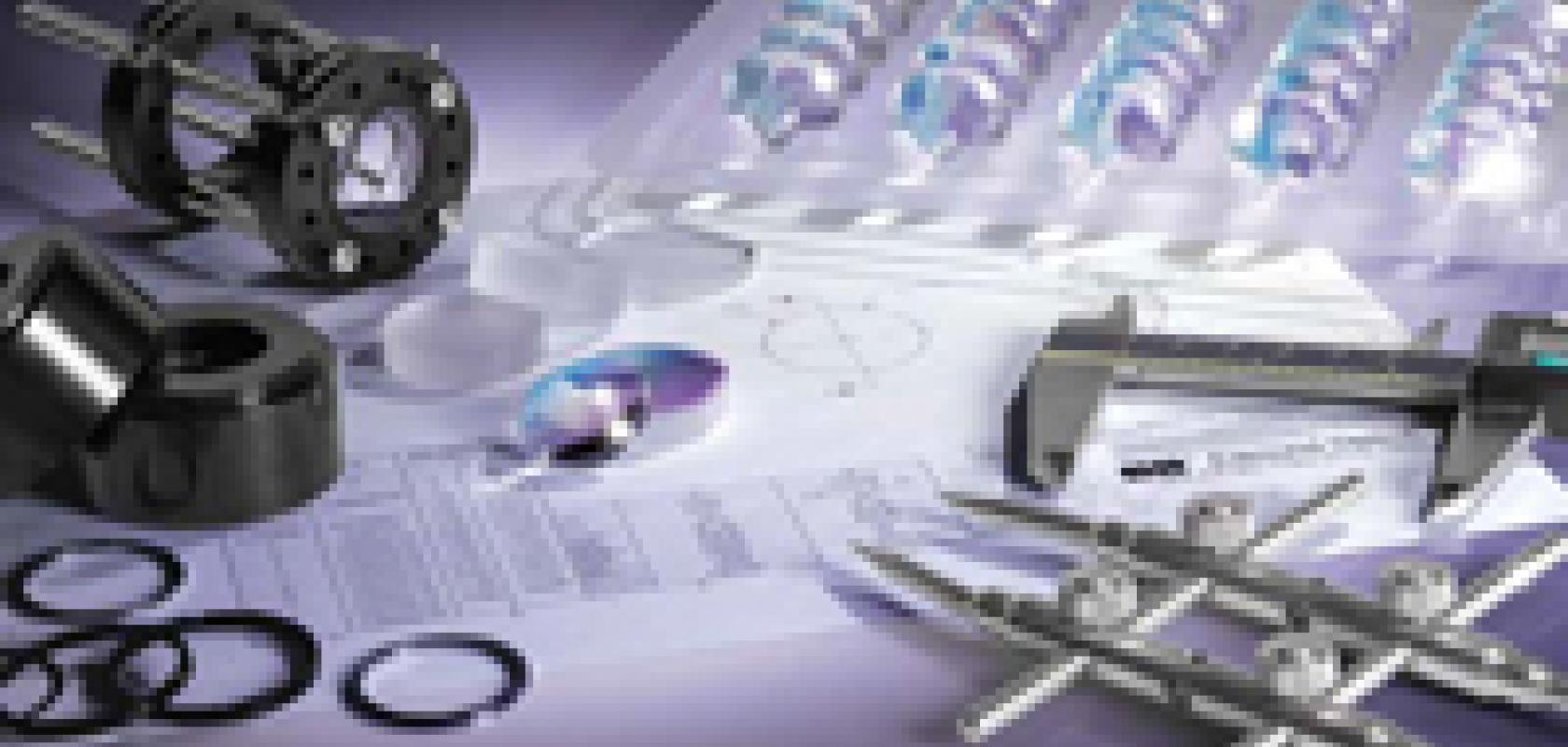Designing with Stock Optics

Benefits of stock optics in custom designs
Engineering projects involving optical systems have the same time and money constraints as other projects handled by engineering. Just as electrical engineers learned long ago that integrating standard resistors, capacitors and switches could save money and reduce time-to-market, optical design engineers are learning that leveraging the investment already made in designing, producing and stocking standard optics can provide similar benefits.
Standard off-the-shelf optics save money, eliminate lead times and reduce complexity when compared to custom optics. Working closely with an optical manufacturer can help determine the most appropriate way to use stock optics in a custom design.
The first step: prototyping
In the prototyping phase, stock optics help reduce design and development time because they are readily available. The lead time associated with custom optics manufacturing, which could take months, is eliminated. Stock optics, however, can arrive as quickly as overnight, reducing the time from design to prototype, and allowing testing to begin almost immediately. As technology advances, the advantage to being first to market becomes increasingly important, and using stock optics can keep design engineers one step ahead of the competition.
In addition to the substantial speed benefit that stock optics provide, they are also significantly more economical than custom designs. Costly tooling and NRE charges associated with custom optics are entirely eliminated, reducing unit prices for the small lots (typically associated with prototyping) to a fraction of what they would otherwise be. Stock optics do not require the hefty minimum order quantities that custom optics do, so design engineers need only order exactly what is needed for their prototyping. And as standard optics are already stocked at optical manufacturers, there is also no need for design engineers to keep inventory on-site.
Multiple prototype iterations, utilizing completely different optical designs, are possible within the budget and lead time of a single prototype design integrating custom optics.

Figure 1: Using standard off-the-shelf optics in optical system design can save time and money from initial prototyping through to volume production
From prototype to production
The same exact optical components used in prototypes can be used in production, so there is no need to redesign or requalify the optical system. The transition from prototype to production becomes a seamless, rapid transition.
The lead time benefits achieved when using stock optics in prototyping extend to using stock optics for production. There is no need to ramp up production, as the stock optics are already available in volume. Not only does this remove any delay during ramp up, it also removes any engineering uncertainty.
As the optic is a stock component, the optical supplier has already invested in nonrecurring engineering costs, tooling and volume production; design engineers, therefore, no longer need to incur these expenses. Projects benefit from the cost advantages of volume production, from the very first optic to the lower volumes that typify high-end optical system manufacturing.
There are also inventory benefits to using standard off-the-shelf optics: as optical manufacturers already stock them, there is no need to maintain an expensive in-house inventory, significantly reducing inventory and carrying costs. Spikes in demand or high variability in forecasts are easily mitigated through suppliers’ inventory. Standard off-the-shelf optics typically don’t have minimum order quantities, reducing the strain on your supply chain of transitioning from prototype to production. And because vendors seldom discontinue or alter their stock optics, supply issues seldom arise, safeguarding the supply chain during the entire product lifetime.

Figure 2: Modified stock optics, such as adding a custom coating, can provide the benefits of stock optics to designs where standard off-the-shelf optics don’t meet the user’s needs
When stock optics don’t quite meet the needs
While stock optics satisfy most (if not all) optical design project requirements, it can be difficult to meet more specific demands. Working closely with an optical manufacturer can help identify when modifying stock optics is possible, eliminating the need for expensive custom optics.
A brief description of the optical manufacturing process helps explain when modifying stock optics provides benefits over completely custom optics. Glass optics, a common choice for optical design projects, start as a blank material that is slightly larger than, but roughly the same shape and thickness of, the final product. One side at a time, material is ground off using diamond-infused tools until the surface is approximately the correct form. The next step is to polish each side using finer tools – most commonly with a loose abrasive in suspension – until the surface reaches sufficient optical quality. At that point, the optic is centered or edged and reduced to its final size while carefully aligning the optical axis with the mechanical axis. The last step, if required, is the application of an optical coating, which can range from metallic reflection or broadband anti-reflection coatings, to laser line filters.
Each step in the optical manufacturing process encounters nonrecurring engineering and tooling costs, and setup contributes to the lead time. Where it is possible to eliminate manufacturing steps by modifying existing stock optics (instead of manufacturing custom optics starting from blanks), time and money can be saved.
Modified stock optics leverage the optical manufacturer’s inventory and design catalog while providing the necessary customization. Working closely with the optical manufacturer allows the customer to take full advantage of the benefits of stock optics design projects, and extends these benefits to modified stock optics when off-the-shelf components don’t quite meet the designer’s needs.
- Custom coating: Uncoated stock optics can be coated with specifically designed coatings to meet specifications. Uncoated, standard off-the-shelf optics can be pulled directly from stock and coated, resulting in short lead times (sometimes less than a week). While coating is a batch process that is typically expensive, large optical manufacturers often have hundreds of coating designs that run fairly regularly. If the system requirements call for a fairly standard coating design – on a substrate that isn’t typically offered with that coating – the manufacturer may be able to batch the optic with normal production and eliminate any lot charges on the optic.

Figure 3: While surface modification is necessarily followed by a number of manufacturing steps, starting from a stock optic eliminates the need to source the correct glass in the correct size, and the grinding time can be reduced compared to a custom design by choosing the correct stock optic to start from
- Dimension modification: The same techniques used during initial production can be applied to finished stock optics to modify the external dimensions. In some cases this can be done while preserving the initial coating; for other optics a new coating will be required after dimensional modification. This eliminates the need to source the raw material, and grind and polish it. Diameter reduction is the most obvious dimension modification, but truncations and other shapes are equally possible.
- Surface figure improvement: In order to improve a stock optic’s surface, it must return to the polishing step. Finer abrasives or more advanced polishing techniques, such as magnetorheological finishing, can be used to manufacture a more precise surface figure or reduce surface defects. As a stock optic has already been sourced and ground, time and money are saved skipping these manufacturing steps.
- Surface modification: Stock optics can be modified to change their radius of curvature or to introduce aspheric departure. As this returns the optic to the grinding step, this modification consumes the most time and incurs the highest costs. Nonetheless, starting from the correct size stock optic instead of raw material can be beneficial, as the material has already been sourced and grinding time can be reduced to a minimum.
Sorting optics
If a standard optic meets all of a system’s basic requirements, but a more stringent tolerance is required for system integration, the optical manufacturer could sort their inventory to meet those needs. Optical manufacturers will often specify a relatively conservative specification but have optics on the shelf that greatly exceed those minimum requirements. Common tolerances that can be improved simply by sorting available inventory include surface quality (scratch-dig), surface accuracy (power, irregularity and flatness), centration, parallelism, dimensional tolerances, and coating performances.
Another similar technique is to measure the off-the-shelf part and adjust the optomechanical design accordingly, correcting air spacing and fitting to accommodate those parts. These modifications can often be faster and less expensive than making optics to the tighter tolerance. And working with the manufacturer to understand their process capabilities can yield significant improvements over published specifications.
Visiometrics’ HD Analyzer
Developing an optical measuring system to evaluate how well you can see
Visiometrics, a fast growing Spanish company, is a perfect example of how standard optics can be used successfully. Their HD Analyzer evaluates how well an image is formed on the retina and it is entirely developed using standard optics.
Their innovative technology allows doctors to better understand the visual performance of the eye by measuring on the retina directly. This permits early detection of a number of pathologies such as cataracts or the dry eye syndrome.
It is crucial to have a reliable method to effectively confirm or rule out vision problems caused by the optics of the eye. The natural lenses of the eye produce images onto the retina just as a camera projects images on its sensor. Visiometrics’ HD Analyzer measures the quality of the image projected onto the retina by delivering both an image and a score of the eye’s optical limit. Knowing the optical limitation of the eye is the first step to detect the underlying cause of the problem. This information is critical to select the most appropriate treatment plan. For example, early detection of cataracts is essential as it allows an easier extraction of the natural lens, which in most cases simplifies the surgery.
Visiometrics shows how the use of standard optics can be applied to the development of innovative technology without sacrificing performance. Their HD Analyzer represents a perfect example of the advantages of using standard optics in the production of high quality optical systems.

Figure 4: Hda1 – The HDA Analyzer, by Visiometrics

Figure 5: Cataract – HD image of the scatter provoked by a cataract

Figure 6: Dry eye: Graphic displaying the tear film analysis
Reference
http://www.visiometrics.com/how-does-the-hd-analyzer-work/
Meet the Authors
Stefaan Vandendriessche (Optical Engineer in Barrington, NJ)
Email: SV@edmundoptics.com
Alex Thorel (Sales and Applications Engineer in the UK)
Email: AlexT@edmundoptics.co.uk
Sandra Fanjul (Sales and Applications Engineer in the UK)
Email: SandraF@edmundoptic.co.uk
UK: +44 (0) 1904 788600 | GERMANY: +49 (0) 721 6273730
sales@edmundoptics.eu | FRANCE: +33 (0) 8 20 20 75 55


